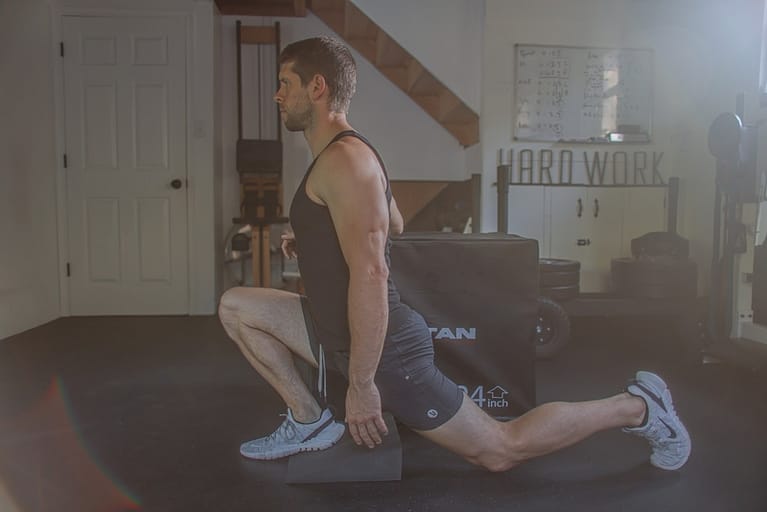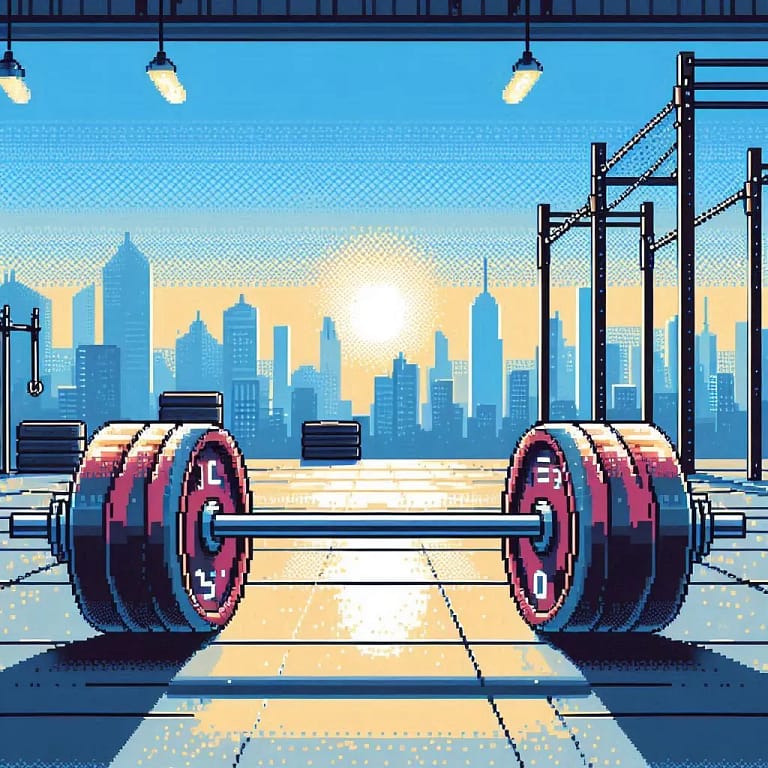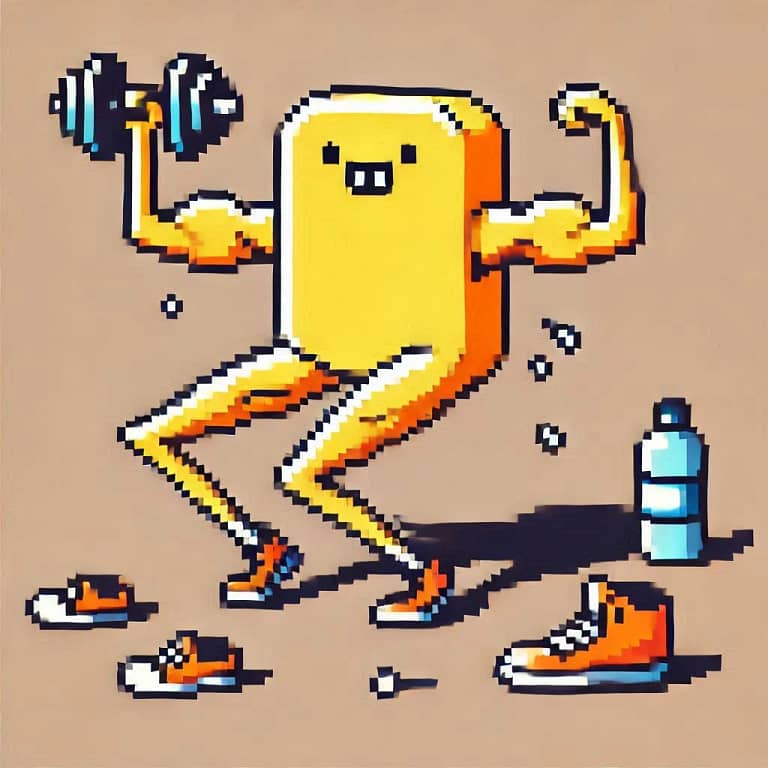How to Prevent Lower Back Pain By Increasing Flexibility and Hip Strength
Sitting can be a killer of health, it can also hurt your back through ways you could never imagine. In this article, we concentrate on the negative effects sitting can have on your back and preventing back injuries by increasing your flexibility and hip strength. If you want to read about how to prevent and improve back injuries, you can go to our previous article here.
Sitting too long can not only be detrimental to your health, but it can have downstream effects. Sitting for long periods of time can cause a lack of mobility in the hips. Over time, this can lead to low back compensations and low back pain.
“Sitting for long periods of time can cause a lack of mobility in the hips. Over time, this can lead to low back compensations and low back pain. “
When sitting, our hip flexors are in a passively shortened position. As the hip flexors get shorter your lower back has to compensate for this lack of mobility and accrues shear from various movements, especially during forward bending movements.
Long bouts of sitting can also put unwanted pressure on the spinal discs because of the flexed position the low back is in when sitting. Whether sitting is causing you to have back pain by compressing your discs or by making your hips immobile and forcing your lower back to shear more during movement, it is important to know how to undo the effects of sitting.
Warning:
As always, consult a medical professional if you think there is something wrong!
The Problem with Sitting for Too Long
Long periods of sitting can cause the hip flexor muscles to shorten as well as extra shear at the lumbar spine. As our hip flexor muscles shorten, the lower back begins to have to compensate for the immobility of the hips. This causes even more shear at the spine during every day and athletic movements.
Hip flexion is important in many of our daily activities (like putting socks on). The hip flexors attach to the front of the lower back vertebrae and the top of the thigh.
When sitting, our hip flexors are in a passively shortened position. I want to explain what I mean by “shortened position”.
Let’s use the bicep muscle as an example. During the act of a dumbbell curl you contract your muscle and shorten it when the dumbbell is at the top of the motion. When you lower the dumbbell to the start position, your bicep is in the lengthened position.
Your hip flexors work in a similar fashion. When they contract, they draw the leg towards the torso. When they are lengthened, your leg can extend towards the floor.
The problem is that long periods of sitting encourages passive hip flexion, which means that your hip flexors are in the shortened position without having to contract. This causes them to become passively and chronically short.

Your hip flexors are important for many movements including gait
Now that the hip flexors have become shortened, do you remember where the muscle attaches? That’s right. The lower back. The shortening of the hip flexors will now cause the lower back to have to compensate and overextend us when standing into a position called anterior pelvic tilt.

Anterior pelvic tilt cause the low back to be more compressed and overly active during movement
Because of the inability of the hips, the lower back will have to become more mobile during movement and will experience more shear during forward bending movements as well.
We can’t avoid sitting completely, but we can perform exercises to help mitigate and reverse the damage it can cause.
Restoring Hip Flexor Length and Strength
We want to lengthen and strengthen the hip flexors. Doing so will provide relief to lower back pain and an improvement to overall athletic ability.
You might remember that we used some of the same exercises in the hip health article.
Couch Stretch
The couch stretch is an effective stretch, and by effective, I mean painful. It is a good stretch for reclaiming hip flexor length. You are about to find out how tight your hip flexors really are!
Kneel with one knee down in front of a wall and slide back until you can place your vertically on the wall with your toes pointing straight to the ceiling. Try to keep your torso upright and you will feel a major stretch in the hip flexor (might feel like your quad) of the leg that is against the wall. Try to hold this stretch for a minute on each side.
You may have to work up to this standard because this stretch can be very uncomfortable to hold for a minute. Also, be sure to take notice if one leg feels tighter than the other.
If you are really having a hard time with this stretch or are finding it difficult to set up, you can put your leg on a couch instead of the wall.
Kneel with one knee down in front of a wall and slide back until you can place your vertically on the wall with your toes pointing straight to the ceiling. Try to keep your torso upright and you will feel a major stretch in the hip flexor (might feel like your quad) of the leg that is against the wall. Try to hold this stretch for a minute on each side.
You may have to work up to this standard because this stretch can be very uncomfortable to hold for a minute. Also, be sure to take notice if one leg feels tighter than the other.
If you are really having a hard time with this stretch or are finding it difficult to set up, you can put your leg on a couch instead of the wall.
Piriformis Stretch
Sitting can exacerbate back pain because of the pressure it puts on the piriformis muscle and the sciatic nerve that runs close by through the buttocks. The piriformis stretch will help relieve pressure on the sciatic nerve and improve hip external rotation, leading to less back pain.
Place the outside of your shin on a box or a bench. You can brace yourself by putting your hands on either side of your front leg. Your back leg can simply bend or stay straight depending on the height of the box you’re using.
From here, simply bring your chest towards your knee to feel a deep stretch in the glute muscle of the leg that is up on the box.
If this stretch is too painful for you, try placing a pad or pillow underneath your knee so that the stretch isn’t as deep.
2 sets of :60 each side
A pigeon stretch can work in place of this move and may be more comfortable
ATG Split Squat
Set up in a split squat or split stance position with your front foot about 2 feet in front of your back foot. With your weight predominantly on your front foot, sink down and forward until your front leg hamstring is touching your front leg calf.
You should feel a stretch in your trailing leg hip flexor. Hold the bottom position for 2-5 seconds before pressing into the floor with the front foot and returning to the start position. Keep your chest upright especially during the upward phase of the movement.
Make sure to have something to the side of you (like a chair or a wall) to help you with balance, especially if you are having trouble keeping your chest upright.
You can use a wedge or weight plate underneath your front leg if your ankle mobility is limited. Learn how to improve ankle mobility here.
This movement is good for so many reasons. It will lengthen your hip flexors, strengthen your knees, mobilize your hips and help alleviate back pain.
Even if you are not strong enough to perform the concentric or upwards part of the motion, you can still hold the bottom of the motion which is a great stretch to your rear leg hip flexor. Just make sure you hold onto something for balance.
You can add dumbbell resistance when you’re ready. Don’t let the added resistance change how you implement the movement. Slow and controlled descent with a brief pause at the bottom and make sure your torso stays upright on the upward phase.
Resisted Hip Flexion
How many people who train regularly completely ignore their hip flexors?
Get a set of light resistance bands. Place one around your feet. Stand close to a wall or something to allow you to balance yourself. Slowly raise one knee towards your chest and hold the position at the top for a brief second before returning your foot to the floor.
Hip flexion is so important to hip health and athletic ability and yet it is missing from so many strength and conditioning programs.
3-5 Sets of 10 reps each leg
Conclusion
We can’t avoid sitting and sitting for long periods of time can cause problems. By passively shortening our hip flexors, we are asking for more hip and low back problems. However, if you’re regularly performing these exercises (at least once per month) you will not have to worry about the damage long term sitting can cause.
“Sitting for long periods of time can cause problems.”
These movements require very little equipment and can be performed almost anywhere. This is great news if you are in a situation where you are going to have to sit for long periods of time, like traveling or at work.
Start now! You may not think you have lumbopelvic dysfunction, but remember, the body can only compensate for so long and these compensatory movements will have consequences in the long run. Perform these exercises because an ounce of prevention is worth a pound of cure!
Training
| Training Protocol (1-2 times per week) | ||||
| Focus | Exercise | Sets | Reps | |
| Restoring Hip Mobility | Couch Stretch | 2 | :60 Each | |
| Piriformis Stretch | 2 | :60 Each | ||
| Strengthening Lengthening Hip Flexors | ATG Split Squat | 5 | 5 Each | |
| Resisted Hip Flexion | 5 | 10 Each | ||
Key Takeaways
References
- Bontrup C, Taylor WR, Fliesser M, Visscher R, Green T, Wippert PM, Zemp R. Low back pain and its relationship with sitting behaviour among sedentary office workers. Appl Ergon. 2019 Nov
- Boukabache A, Preece SJ, Brookes N. Prolonged sitting and physical inactivity are associated with limited hip extension: A cross-sectional study. Musculoskelet Sci Pract. 2021 Feb
- Deane RS, Chow JW, Tillman MD, Fournier KA. Effects of hip flexor training on sprint, shuttle run, and vertical jump performance. J Strength Cond Res. 2005 Aug;19(3):615-21.
- Glenister R, Sharma S. Anatomy, Bony Pelvis and Lower Limb, Hip. [Updated 2023 Jul 24]. In: StatPearls [Internet]. Treasure Island (FL): StatPearls Publishing; 2023 Jan-.
- Konrad A, Močnik R, Titze S, Nakamura M, Tilp M. The Influence of Stretching the Hip Flexor Muscles on Performance Parameters. A Systematic Review with Meta-Analysis. Int J Environ Res Public Health. 2021 Feb 17
- In TS, Jung JH, Jung KS, Cho HY. Spinal and Pelvic Alignment of Sitting Posture Associated with Smartphone Use in Adolescents with Low Back Pain. Int J Environ Res Public Health. 2021 Aug 7;18(16):8369.
- Shum GL, Crosbie J, Lee RY. Three-dimensional kinetics of the lumbar spine and hips in low back pain patients during sit-to-stand and stand-to-sit. Spine (Phila Pa 1976). 2007 Apr 1;32(7):E211-9.
- Squire J. Special Issue: The Actin-Myosin Interaction in Muscle: Background and Overview. Int J Mol Sci. 2019 Nov 14
- van Deursen LL, Patijn J, Durinck JR, Brouwer R, van Erven-Sommers JR, Vortman BJ. Sitting and low back pain: the positive effect of rotary dynamic stimuli during prolonged sitting. Eur Spine J. 1999;8(3):187-93.
- Yamane M, Aoki M, Sasaki Y, Kawaji H. Understanding the Muscle Activity Pattern of the Hip Flexors during Straight Leg Raising in Healthy Subjects. Prog Rehabil Med. 2019 Feb 16





